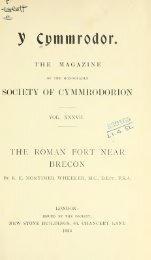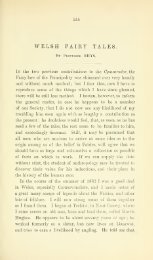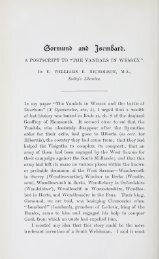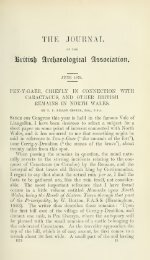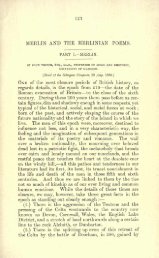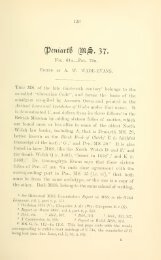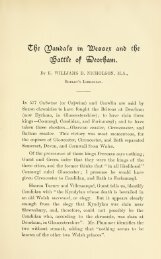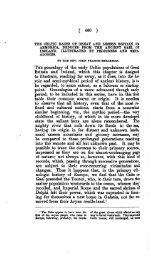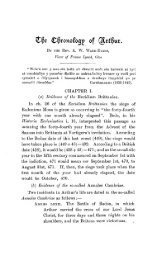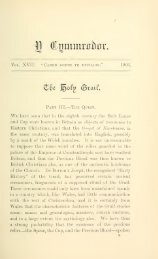An Introduction to Early Welsh - Arthur Pendragon of Wales
An Introduction to Early Welsh - Arthur Pendragon of Wales
An Introduction to Early Welsh - Arthur Pendragon of Wales
You also want an ePaper? Increase the reach of your titles
YUMPU automatically turns print PDFs into web optimized ePapers that Google loves.
'<br />
52.] THE PRONOUN. 37<br />
developed from cases where the nominative stands at the head <strong>of</strong> the<br />
sentence introducing it ( 26), e.g. amheu yr hynn a dywedwch chwi ny-s<br />
gwnaf i lit. doubting <strong>of</strong> what you say I ivill not do it. A meaningless -s-,<br />
however, is found when the verb is non-relative, e.g. nys gohiryassant<br />
they did not delay RB. II. 48.<br />
(h) Certain :<br />
conjunctions tra-e llathei while he slew them BB.<br />
48% yny-m byrywyt i till I was thrown RB. 169, o-S lledy if<br />
thou<br />
slayest him Hg. I. 368. Some conjunctions are followed by the<br />
infixing a, see above (c).<br />
51. The infixed pronoun commonly expresses<br />
the accusative<br />
relation. With the verb ' <strong>to</strong> be,' however, it regularly expresses its<br />
dative relation, e.g., am bo may there be <strong>to</strong> me, may I have^ vn tat<br />
ae bu one father they had; it may further express the dative relation<br />
with other verbs, e.g. y perffeith garyat hwnnw an rodho yr yspryt<br />
glan may the Holy Spirit give us that perfect love LA. 103, an<br />
gunel iechid may He work salvation for us BB. 2ob .<br />
PRONOUN WITH PREPOSITION.<br />
52. In <strong>Welsh</strong> as in Irish the pronoun is regularly fused <strong>to</strong>gether<br />
with the preposition. After ac with and gwedy after, however,<br />
the pronoun follows separately, e.g. a mi with thee, gwedy ni after<br />
us ;<br />
the explanation seems <strong>to</strong> be that the usage <strong>of</strong> these words as<br />
prepositions is secondary. With respect <strong>to</strong> the formation, the<br />
following points may be noted.<br />
(a) In the first and second persons (except after y <strong>to</strong>) there is an<br />
intervening vowel a, O (aw), or y (and in 2 pi. also w), so that in<br />
these persons there are the following series :<br />
1.<br />
Sing.<br />
Plur.<br />
-af, -<strong>of</strong>, -yf -am, -om, -ym<br />
2. -at, -ot, -yt -awch, -och, -wch, -ych<br />
(b) In the 3 sg. masc. the ending is -aw, in the 3 sg.<br />
fern, -i<br />
(infecting a preceding vowel) and -ei, e.g. oheni and ohonei ;<br />
sometimes the infected vowel spreads analogically, e.g. 3 pi.<br />
ohenynt. In the 3 pi. the oldest ending was -u, whence<br />
developed later -ud (i.e. -ud), -unt, -ynt. In the third persons<br />
-aw, -u, etc., are commonly preceded by a dental.




